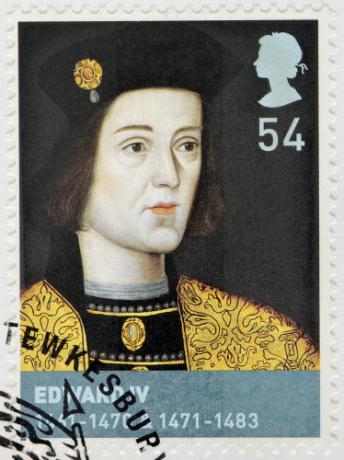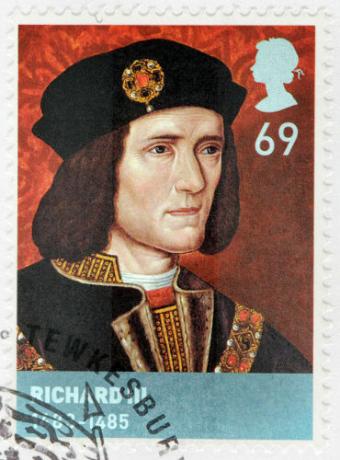THE War of the Roses it was a conflict that took place in England, during the past years between 1455 and 1485, between two noble families of the country. In this war, the York and the Lancaster, both descendants of the Plantagenet, waged a war for the English throne. The conflicts that characterized the War of the Roses extended through the reign of Henry VI, Edward VI, Edward V and Ricardo III.
At the end of this conflict, Henry Tudor it emerged as an alternative to the English throne, and when he was crowned in 1485 as Henry VII, the Tudor dynasty. One of the results of the rise of the Tudors was the centralization of power in the figure of the king.
Also access: References that exist between Game of Thrones and the War of the Roses
Name origin
The name of Guerra das Rosas refers to the symbols of the families that disputed the English throne in the 15th century. The Yorks had as a symbol a White Rose, and the Lancasters, a Red rose. After Henry Tudor took over (he was an heir of the Lancasters), as a way to reconcile the situation, he married a York, and the symbol of the Tudors, called
Tudor Rose, was a rose that merged the white rose of the York with the red rose of the Lancasters.Context
The War of the Roses, like many of the dynastic wars, took place between noble families who believed themselves to possess the throne of England. The origins of this war go back to the end of the 14th century and to the succession problems that arose with the Plantagenet dynasty. These succession problems go back to the reign of Ricardo II (1377-1399).
These problems began in 1377, when King Edward III died. The natural successor was his eldest son, Edward the Black Prince, but the heir had died a year earlier. Thus, the succession to the throne was transmitted to the eldest son of the latter (grandson of Edward III) who was named Richard of Bordeaux, and he was crowned as Ricardo II.
The coronation of Richard II generated much uncertainty in the English nobility because he was, at the time, a child of 10 years and have no heirs. Furthermore, Ricardo II was becoming a unpopular king for the high taxes levied and for its tyrannical reign. These questions stirred the nobility against the English king, especially the Lancasters.
Lancaster Dynasty
The Lancaster dynasty emerged in England when its representatives carried out a coup that toppled Richard II from the throne. This coup took place in 1399 and opened the way for new power struggles to take place in the following decades. These disputes took place, above all, in the reign of Henry VI.
The Lancaster's rise to power is related to Henry of Bolingbroke, son of João Ghent and cousin of the king. John Ghent was the first Duke of Lancaster after the title was recreated in 1362, and his son went on a collision course with Richard II. The king then decreed Henry's banishment, and after John Ghent died, the king took over all the possessions that would be inherited by Henry of Bolingbroke.
The latter gathered forces, returned to England and began a military campaign against the king claiming that he wished to regain his possessions and rights as heir to the duchy of Lancaster. The campaign gained momentum and ended up leading to king's overthrow in 1399 and marking the beginning of the Lancaster dynasty.
Know more:English absolutism
reign of Henry VI

Henry VI was considered a weak and mad king, and conflicts with Richard of York started the War of the Roses.*
After Richard II was deposed, Henry of Holingbroke was crowned king as Henry IV (which reigned from 1399 to 1413). The other kings of Lancaster went Henry V (1413-1422) and Henry VI (1422-1461 and 1470-1471). The War of the Roses began as a result of the power struggle that took place during the reign of Henry VI.
This was another king who did not have great support from the English nobility and suffered accusations of being weak and Crazy. The first accusation took place because it was during his reign that England's defeat in the Hundred Years War. The second charge is attributed to the fact that Henry VI suffered from psychiatric illnesses - probably schizophrenia or depression.
Henry VI's incapacity as ruler made him easily manipulated, especially by his wife, Margaret of Anjou. The English nobility dissatisfied with the king began to conspire against him, and, in one of his outbreaks that temporarily incapacitated him of ruling, Ricardo, Duke of York (Ricardo Plantageneta), was chosen as Lord Protector from the country.
Richard of York assumed this role between 1454 and 1455, and after the king had recovered, Richard of York refused to give him power back. The War of the Roses grew directly out of this power struggle between Richard of York and the King of England, Henry VI.
Start
The battle that started the War of the Roses was the Battle of Saint Albans, on May 22, 1455. During this battle, Henry VI's troops were sent to face Richard of York's forces, which resulted in the king's defeat.
After that, Henry VI was taken prisoner and his wife, Margaret of Anjou, and her son, Edward of Westminster, fled. The English king was forced to recognize Richard of York as Lord Protector, and disputes between the two continued for years to come.
In 1459, violence returned in force to England and battles broke out in Blore Heath, Ludford and Northampton. In wakefield, a battle was fought in December 1460, and in it the Lancasters had a most important achievement: Richard of York was captured and executed. Richard of York's son, named Edmund, Earl of Rutland, was also killed.
See too:UK
Deposition of Henry VI
Even with the death of Richard of York, the war continued. The eldest son of this, named Edward, inherited the title of Duke of York and continued his father's war. New battles took place in Mortimer's Cross and Saint Albans. Eduardo had the help of Ricardo Neville, the Earl of Warwick, and in the Towton Battle, the York won.
In this battle, which took place in March 1461, the English king was forced to flee to Scotland, along with his wife and child. Edward, the victor, was crowned King of England and became Edward IV. The Lancasters resisted Edward IV until about 1464, and the former king, Henry VI, was captured in 1465 and imprisoned in the Tower of London.
reign of Edward IV

Edward IV, son of Richard of York, became King of England after defeating Henry VI.*
Edward IV was crowned King of England in June 1461, and his accession to the throne was largely due to his alliance with the Earl of Warwick. This one was extremely wealthy and influential (and had its wealth increased by the war). It turns out that during the reign of Edward IV, the king's relations with the Earl of Warwick became bad.
That's because the Count had negotiations with Louis XI (King of France) for Edward IV to marry the daughter of the French king. However, Edward IV joined in secret marriage with Elizabeth Woodville, who belonged to a family of the English gentry. The king's secret marriage was considered a great humiliation for the Earl of Warwick.
Furthermore, this event caused the Woodvilles to rise in the English court at the expense of the Nevilles (the Earl's family). With this, the Earl of Warwick distanced himself from Edward IV and, in 1469, allied with the Lancasters. The Count still managed to convince the king's brother, Jorge Plantagenet, to betray him.
The following year, in 1470, the Earl of Warwick initiated a revolt against Edward IV. His revolt meant that he had to flee to Holland, and then settle in Burgundy. Eduardo IV had the support of his brother-in-law Carlos, Duke of Burgundy. At this moment, Henry VI has been restored as King of England.
Later, Edward IV regained his strength, through the support of Charles and, in 1471, led an expedition that invaded England. Soon Edward's armies conquered London and faced Warwick's army in Battle of Barnet. The Earl of Warwick ended up dead in that battle.
Margaret and Edward (wife and son of Henry VI) returned to England, joined forces with Lancaster supporters and left for the Battle of Tewkesbury. The Lancasters were defeated in that battle and Edward of Westminster was killed. Shortly thereafter, Edward IV ordered the execution of Henry VI.
Also access: Discover the trajectory of Elizabeth I, granddaughter of Henry VII of the Tudor dynasty
End

Richard III assumed the English throne in 1483 after imprisoning his nephews.*
After the victory over the Lancasters, Edward IV reigned in England until 1483, when he died for unknown reasons. The succession would be passed on to his son, known as Edward V, and his uncle, Richard, Duke of Gloucester, he was named Lord Protector of England because Edward V was a child.
The Duke of Gloucester turned against his nephew, ordered his arrest (along with the brother of Edward V) and managed to issue a declaration that the marriage of Edward IV and his nephews were illegitimate. This caused him to be crowned king as Ricardo III, and later on, his nephews disappeared.

Henry Tudor was crowned King of England as Henry VII in 1485.*
Edward V and Richard of Shrewsbury are believed to have been murdered at the behest of Richard III, but there is nothing to support this assumption. Richard III was king of England until 1485, and that is because, during his reign, the name of Henry Tudor, descendant of the Lancasters, was aired as an alternative to the English throne.
Henry Tudor joined forces and formed an army that invaded England in 1485. Richard III set out to defend his kingdom, and both forces met in the Battle of Bosworth Field, in which Tudor won and Richard III was killed in combat. With Tudor's victory, the York lost power.
The return of the Lancasters came with the coronation of Tudor as Henry VII. To end the conflicts between the families, Henry Tudor married Elizabeth York, daughter of Edward IV, and started the Tudor dynasty.
*Image credits: Sergey Goryachev and Shutterstock
By Daniel Neves
Graduated in History
Source: Brazil School - https://brasilescola.uol.com.br/historiag/guerra-das-rosas.htm
